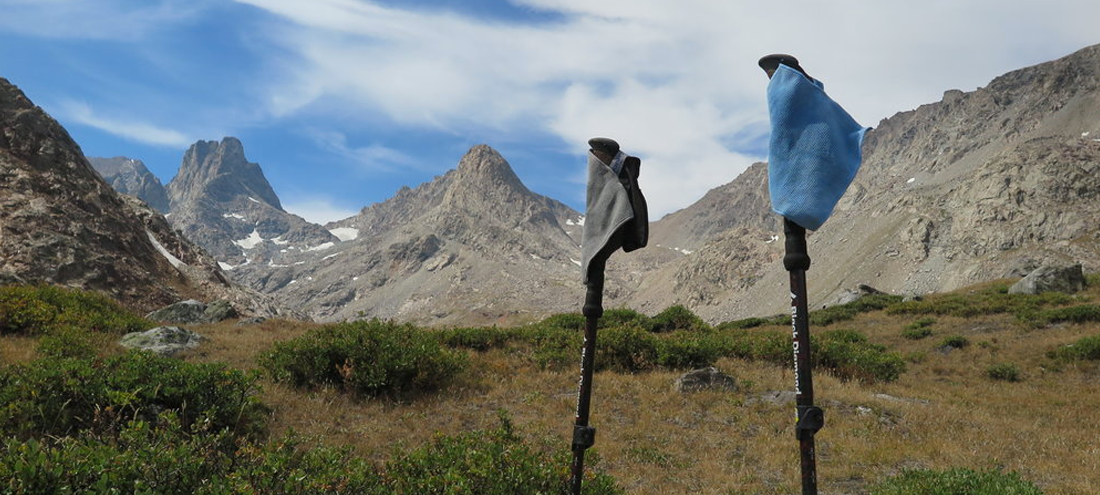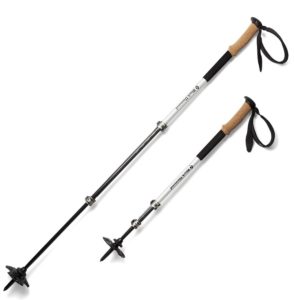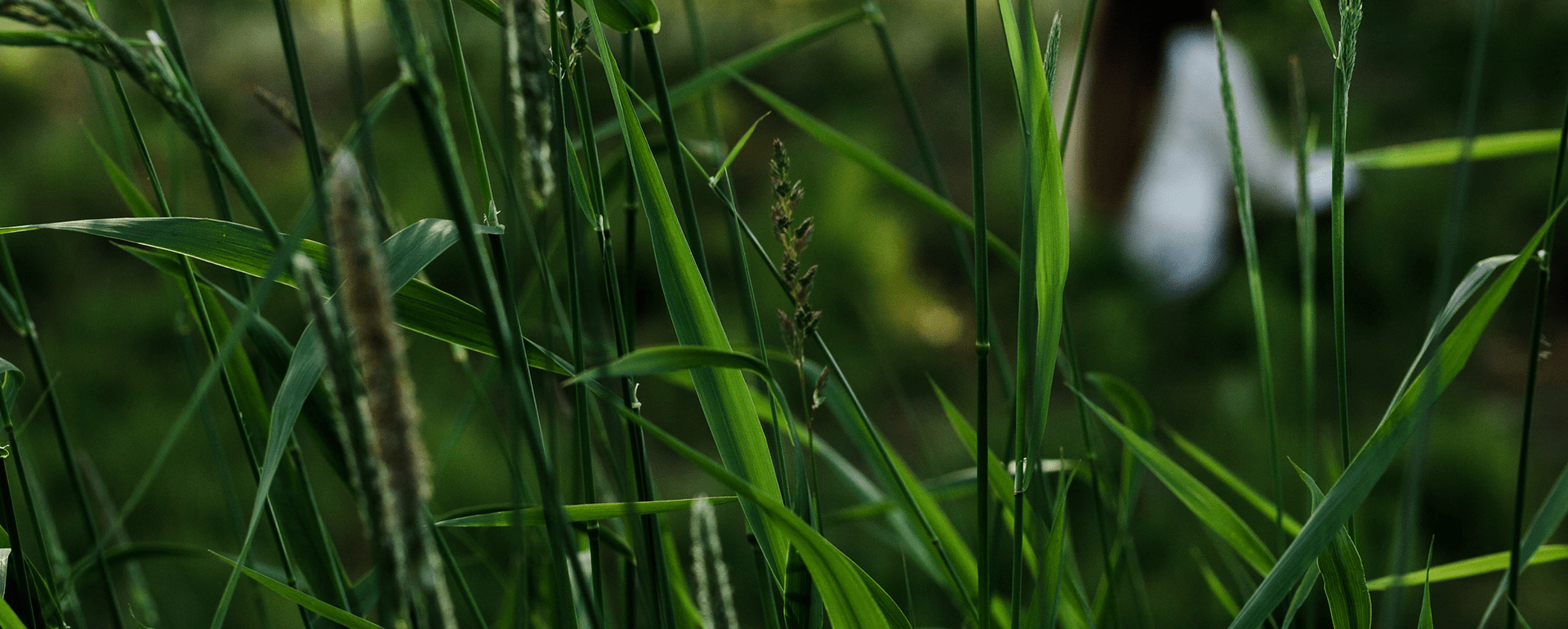
30 Jun 9 reasons why you should hike with trekking poles
Confession: I used to think that trekking poles were for old people. I incorrectly assumed that the only reason that people needed poles for hiking was to compensate for their lack of fitness and ability. I thought of them as, “crutches for the weak”. I saw myself as the ideal specimen of hiker: the speed of a gazelle, with the stability and surefootedness of a mountain goat – surely I didn’t need the help of overpriced carbon-fiber sticks.

I was wrong. So, so wrong.
My very first backpacking trip was an ascent of Mt. Baker, a 10,700′ glaciated volcano in Washington. Nevermind the fact that climbing Baker as my first backpacking trip was idiotic – my lack of gear and preparation was pitiful. My backpack was weighed down with clunky, barely passable gear… it was a chiropractor’s dream and a lumbar-pain nightmare. When I arrived at the trailhead to meet my group, I was stunned to see a few members carrying poles – particularly because these people were my co-workers at the time, and certainly did not fall into the, “old and frail” category. I couldn’t possibly understand why they would have wanted to bring poles with them – after all, didn’t they realize that it looked dumb? (author’s note: didn’t I also realize that I looked dumb wearing shorts with tights underneath them, pink ski goggles and a jacket that didn’t have a functioning zipper?)

On my first ever backpacking/mountaineering trip: carrying a stupidly heavy pack and no poles.
A few miles into the hike, we arrived at a sketchy stream crossing. I watched as my friend, using poles, confidently rock-hopped across the raging waters. Then it was my turn. I looked like a drunk version of Goofy attempting to rollerskate on an ice rink. My friend handed me one of his poles – I took a deep breath, regained my balance and crossed the creek without incident. I gulped hard and swallowed my pride.
So, without further adieu, I bring you my 9 reasons why you absolutely need to hike with trekking poles. Why 9 reasons? Because everybody does a list of 10 things, and I wanted to be different.
1. Poles reduce compressive forces on your knees by up to 25%. If my own personal experience doesn’t convince you, this should. There are lots of actual scientific studies out there, so if you are a data person, just spend a few hours reading publications in sports journals. My type of research? My knees hurt SO MUCH LESS when I use poles. I seriously cannot imagine descending without them.
2. Hand swelling. Have you ever been hiking (without poles) and noticed that your hands mysteriously swell? Wedding band choking your ring finger? I’m not sure how it works, but poles magically prevent swelling in my hands.

On steep ascents, poles are your best friend.
3. Warding off rogue hikers or wild animals. As a preventative measure, I like to smack my poles together while I’m walking if I think that I’m in the near-vicinity of a bear. I’ve also waved my poles (read: frantically waved my poles) to dissuade a bear from approaching me. There is no research on this, but I think that poles probably make us look like strange pack-carrying aliens, which is most likely very intimidating for a bear or a cougar. Also, my mom once saw a nude hiker. I’m not adverse to nudity, but you can never be too careful, and crossing your poles into an “X” is the universal sign to nude hikers that you don’t want them to approach.

Using poles to cautiously descend a tricky scrambly section.
4. Balance. We only have two legs (sorry), which makes things like rock hopping, stream crossings and walking on narrow ledges somewhat unstable. When I climb big mountains, I always have my ice axe in one hand and a pole in the other (unless, of course, I need both hands to climb). Poles help you feel 87% less tipsy (no, that isn’t based on any science, it’s just a number I made up).
 About to descend a steepish snow slope on Snowking Mountain in the North Cascades: pole in one hand, ice axe in the other.
About to descend a steepish snow slope on Snowking Mountain in the North Cascades: pole in one hand, ice axe in the other.
5. You can use your poles to build or stabilize a shelter. If you find yourself having to spend an unexpected night out, you can easily use your poles to help build a shelter – either with a trash bag, a bivy sack, or even with debris from the forest. In addition, there are many ultra light shelters that actually depend on the poles for their primary support system in order to reduce the weight of carrying a set of tent poles (like this one from Hyperlite Mountain Gear).
You can also use your poles as stakes while snow camping. Asking for a friend: If your tent almost blows off a cliff while snow camping, can you use your poles as stakes so that something like that never happens again? Answer: Why, yes you can. Secure your poles to the four corners of your tent and dig down – bury the pole so that your small snow basket is at least 6 inches down, and then bury the end of the pole in the snow.
 Securing a tent with pole stakes.
Securing a tent with pole stakes.
6. Laundry. Nobody likes to do laundry, but you can use your poles to dry your dirty, disgusting, sweaty socks after a long day of hiking. Plant your poles in the ground, remove your socks and turn them inside out and slide them down over the grips on your poles – bam! Instant laundry rack for socks. You can also string a piece of cord in between your poles and use them as a laundry line.

Beauty is in the eye of the beholder: a backcountry washcloth and a pee cloth blowing majestically in the wind.
7. Poking at things. During the spring when boulder fields are melting out, poles can be used to poke at potential snow bridges in order to assess their collapsibility factor. When in doubt, use your pole to poke at things in the wilderness, rather than your leg or your ankle. I’ve also used my pole to poke at unidentifiable globs of goo while hiking. I couldn’t tell if it was bear poop or alien vomit, but I certainly wasn’t going to poke it with my finger.

During the spring, poles maximize safety while meandering through melting boulder fields.
8. A stretcher or a splint. Accidents happen, and in a pinch you can use your poles to construct a makeshift stretcher or a splint for an injured leg.
9. You are awesome. Remember when you used to think that it was uncool to carry poles? Well, now you’re in the club of elite hikers that can give other elite hikers a “knowing wink” on the trail. Kinda like how people riding motorcycles and driving Jeeps always wave at each other? Yep, us pole-carrying members of the elite hiker’s society give each other a secret wink too. Ok, but seriously, I’m not kidding. Well, actually, I am – but it is now your duty to spread the trekking pole love and share them with the people you love the most. I promise, your hiking and backpacking trips will be 91% more enjoyable (and, yes, that is a proven fact).
Tips for purchasing a pair of poles: I like the “quick lock” poles, rather than the “twist lock” poles. The twist lock poles tend to fail pretty quickly. In addition, I really like poles that collapse in 3 sections, rather than two sections. Three section poles are much smaller when collapsed, and they are easier to attach to a pack or to fit into a suitcase for traveling. I avoid poles that claim to have a ‘shock absorber’ inside. The shock absorbing properties of poles only make the poles heavier, and I’d rather carry less weight.
Over the past decade and a half, I have used one pair of poles, and I only have ever replaced them once (and it wasn’t because the poles failed, it was because I gave them away). The Black Diamond Alpine Carbon Cork poles are, in my opinion, the best poles that money can buy. They are virtually indestructible, lightweight and sturdy. If the metal carbide tip breaks off, just buy a pair of replacement tips – no need to replace the entire pole.
For a more budget friendly option, I recommend Cascade Mountain Tech poles. I have a pair of these that I use as a “loaner” pair. They are not as high quality or durable as the Black Diamond poles, but the price is fantastic. Skip using the ridiculous “pole tips” that they include in the kit.
What are your experiences using poles? Do you even use them? Any helpful tips?




Kathleen
Posted at 03:46h, 01 JulyThis is a great article! You should submit it to a magazine like "Backpacker."
Chelsea V
Posted at 17:27h, 31 MayIm going on my very first backpacking hike in the Tahoe Natl Forest and have been enjoying your blog! Esp the recipes, I dont have time to gather the ingredients for this trip but I’ve bookmarked them for next time since freeze dried meals are SO expensive!
I’m intrigued by poles now, I too always thought they were for our elders who have gone through knee and hip replacements. But I’m trying to avoid those things so maybe I should be using them!
It doesnt look like you frequent this blog much lately but I hope you are well 🙂